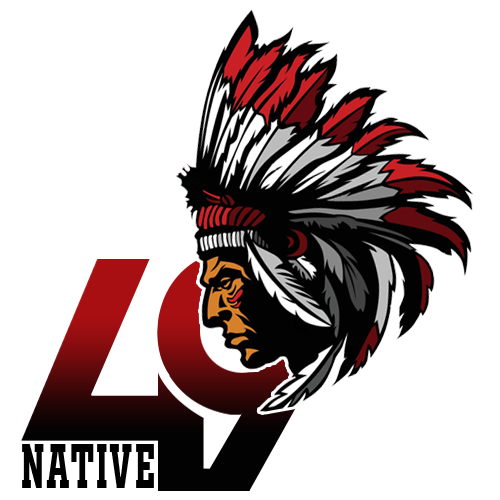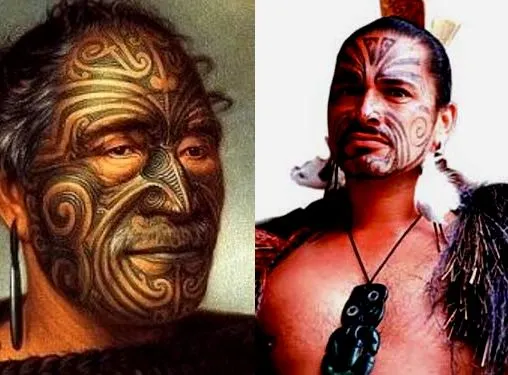Native American face tattoos, with their intricate designs and deep cultural roots, have long captivated the curiosity of those eager to understand their meanings. These facial tattoos are far more than mere ink on skin; they are a profound reflection of indigenous heritage, spirituality, and identity.
In this journey through the world of Native American face tattoos, 49native embark on a quest to unravel the enigmatic stories and symbolism that these remarkable tattoos hold. Join delve into the heart of indigenous traditions and discover the profound meanings etched into the faces of Native Americans across generations.
What Is Native American Face Tattoo Meanings?
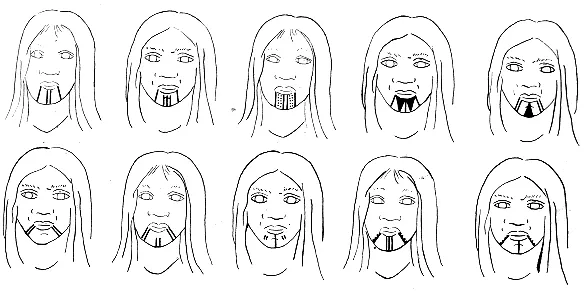
Face tattoos have long held a sacred place within Indigenous cultures, serving as a profound tradition that weaves together ancestral heritage, social standing, and a profound connection to the spiritual realm.
Each mark etched on the skin told a unique story, representing the rich tapestry of Indigenous identity. In this exploration, delve into the history, significance, and the powerful resurgence of Indigenous face tattoos.
A Multifaceted Tradition: Meanings and Designs
Indigenous face tattoos have never been a monolithic practice; instead, they vary significantly across different tribal groups. These tattoos are a canvas of personal and communal narratives, embodying meanings that extend far beyond the surface.
Historically, they conveyed a person’s family lineage, social position within the community, and a profound link to the spiritual world. For Indigenous women, these tattoos held additional significance, signifying pivotal life milestones such as their first menstrual period.
Empowerment and Transition: Women and Face Tattoos
In many Indigenous cultures, face tattoos, particularly among women, symbolize empowerment and the journey from girlhood to womanhood. These intricate designs are not mere adornments but a source of strength and completeness.
For example, in Inuit culture, women wear face tattoos as a testament to their beauty and empowerment. It’s a visual expression of their transition from one life stage to another, celebrating their inner strength and resilience.
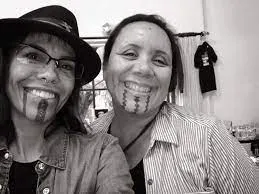
The Dark Era of Colonialism: Cultural Suppression
The beauty and cultural significance of Indigenous face tattoos were tragically suppressed during the era of Western colonialism in North America. This period saw the imposition of bans on various Indigenous cultural practices, including tattoos.
The rich tapestry of Indigenous life, encompassing art, language, jewelry, fashion, music, and storytelling, was systematically dismantled. The profound impact of these suppressive measures still reverberates in Indigenous communities today.
Resilience and Reclamation: A New Beginning
Despite the historical suppression, Indigenous communities are now reclaiming their cultural heritage, including the art of face tattoos. The past serves as a stark reminder of the resilience and determination of these communities to preserve their identity. As cultural revival gains momentum, so does the resurgence of face tattoos as a potent symbol of reclamation and empowerment.
Challenging Stigmatization: From Beauty to Empowerment
Indigenous face tattoos, once celebrated as enhancers of beauty, were unfortunately stigmatized and misunderstood over time. Instead of being recognized as sacred storytellers, they were unjustly twisted into markers that unfairly labeled wearers as unemployable, delinquent, or somehow lesser.
The narrative is shifting, however, as Indigenous individuals proudly wear their face tattoos, challenging stereotypes and asserting their rightful place in society.
The Reawakening of Indigenous Identity
The revival of Indigenous face tattoos represents far more than a resurgence of body art; it signifies the reawakening of Indigenous identity and heritage. Each tattoo etched onto the skin is a declaration of resilience, empowerment, and the unwavering commitment to preserving cultural traditions.
As Indigenous communities reclaim their past and embrace their future, face tattoos shine as beacons of hope and a testament to the enduring spirit of Indigenous peoples.
What do Native American chin tattoos mean?
In the heart of Alaska, a remarkable cultural revival is taking place, spearheaded by passionate individuals committed to preserving Indigenous heritage. With invaluable support from the Anchorage Museum, this revival has found expression in the ancient art of Indigenous tattooing.
Holly Mititquq Nordlum, a tattoo artist of Iñupiaq background, has played a pivotal role in this resurgence. Together with Maya Sialuk Jacobsen, a skilled inker from Greenland, they are breathing new life into traditional Inuit tattooing techniques, including skin stitching and hand poking.
Training the Next Generation: A Tupik Training Program
The journey of Indigenous tattoo revival began with the convergence of talent and tradition. Nordlum, in collaboration with Jacobsen, initiated a tupik training program, aimed at passing down the intricate skills of Inuit tattooing to a new generation.
Through dedicated training, Nordlum and two other women in Anchorage immersed themselves in these time-honored methods. Today, they proudly practice the art of tattooing, preserving and celebrating their cultural heritage.
Tattoos as a Vehicle for Healing: Acknowledging the Impact of Colonization
For Nordlum, the revival of Indigenous tattooing is more than an artistic endeavor; it’s a means to heal the wounds inflicted by colonization. Through tattoos, she facilitates important dialogues within her community.
It’s not about dwelling on the negative aspects of history but rather acknowledging the facts. Colonization undeniably scarred Indigenous communities, but tattooing provides a platform to explore these truths and embark on a journey of healing.
Celebrating Life Milestones: The Significance of Indigenous Tattoos
Traditional Inuit tattooing, predominantly performed by women for women, carries profound cultural significance. Each tattoo tells a unique story, celebrating pivotal moments in a woman’s life. The first lines etched on the chin signify a girl’s transition into adulthood—an occasion of celebration.
Tattoos continue to symbolize various life milestones, such as marriage and motherhood. The number of tattoos a woman bears reflects her age and accomplishments, each achievement a source of pride and celebration.
Restoring Native Pride: Fostering Community
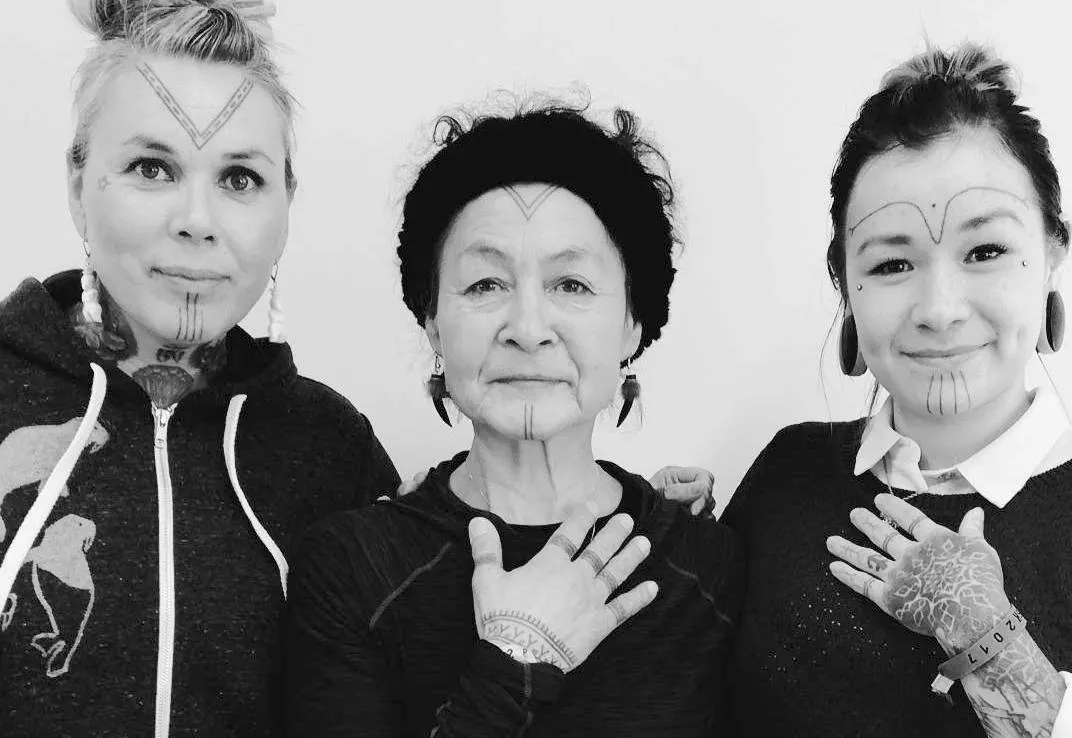
Nordlum’s efforts to revive Indigenous tattooing align with a broader mission—to celebrate and honor Native girls and women. This revival represents a significant shift in perspective, one that was historically suppressed during colonization.
By rekindling these traditions, the Indigenous community in Anchorage and beyond finds unity and pride. It’s a testament to their resilience and an affirmation of their cultural identity.
Balancing Tradition and Progress
While Nordlum is a staunch advocate for preserving traditional practices like female face tattooing, she recognizes the need for a balanced approach. Embracing Indigenous heritage doesn’t imply a return to all traditional practices or ways of life. It’s about selecting and reviving elements that hold deep cultural significance, fostering a harmonious coexistence of tradition and progress.
In the heart of Alaska, a cultural renaissance is unfolding, one tattoo at a time. Through the revival of Indigenous tattooing, Holly Mititquq Nordlum and her peers are not just etching ink onto skin; they are etching the story of resilience, heritage, and community into the very fabric of their culture.
See more: Best Feminine Native American Tattoos For Females
What does 3 lines tattoo on chin mean?
Chin tattoos, specifically the iconic three lines etched on the chin, hold a profound and enigmatic significance that transcends cultural boundaries. While these tattoos might seem like simple designs to the uninitiated, they are steeped in rich cultural heritage and symbolism. Let’s delve into the intricate meanings behind this powerful symbol that has captivated the curious and the ink enthusiasts alike.
A Universal Symbol with Diverse Interpretations
The three lines tattooed on the chin is a recurring motif in various cultures around the world, each imbuing it with a unique interpretation. One common thread among these diverse meanings is the representation of stages in a woman’s life: the maiden, the mother, and the crone.
These stages encompass the journey of womanhood, from youthful innocence to maternal wisdom and the wisdom of old age. This interpretation serves as a universal celebration of the multifaceted roles women play in society.
Nature’s Embrace: Elements of Earth, Air, and Water
In some cultures, the three lines on the chin are associated with the fundamental elements of nature: earth, air, and water. This interpretation reflects a deep connection between the tattooed individual and the natural world.
Earth symbolizes stability and grounding, air represents freedom and intellect, and water embodies emotions and adaptability. Together, they create a harmonious balance between the individual and their environment, highlighting the interconnectedness of all life.
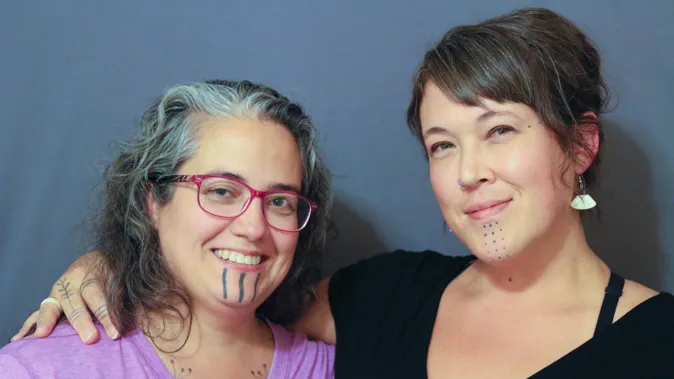
Warding off Malevolent Forces: Protection from Evil Spirits
Another compelling interpretation of the three lines chin tattoo lies in its role as a protective charm against malevolent forces and evil spirits. In cultures where this belief is prevalent, the tattoo serves as a shield, guarding the wearer from negative energies and unseen threats. It is a symbol of spiritual armor, providing a sense of security and safeguarding the individual’s well-being.
Choosing a Chin Tattoo: A Decision of Deep Significance
For those contemplating the idea of getting a chin tattoo, it’s crucial to embark on a journey of understanding and cultural appreciation. Delve into the rich history and meanings associated with this ancient symbol.
Take the time to research and connect with the cultural context that resonates with you. Remember, a tattoo is more than ink on skin; it is a lifelong commitment to a narrative, a heritage, and a profound cultural expression.
Embrace the Symbolism: A Timeless Commitment
In the world of body art, the three lines tattooed on the chin is a timeless emblem of culture, identity, and personal significance. It is a testament to the enduring power of symbols to convey complex ideas and emotions.
So, before you take the plunge into this extraordinary world of chin tattoos, explore its multifaceted meanings, and ensure that the three lines etched on your chin reflect the story you wish to tell—a story that will remain eternally inscribed on your skin and in your heart.
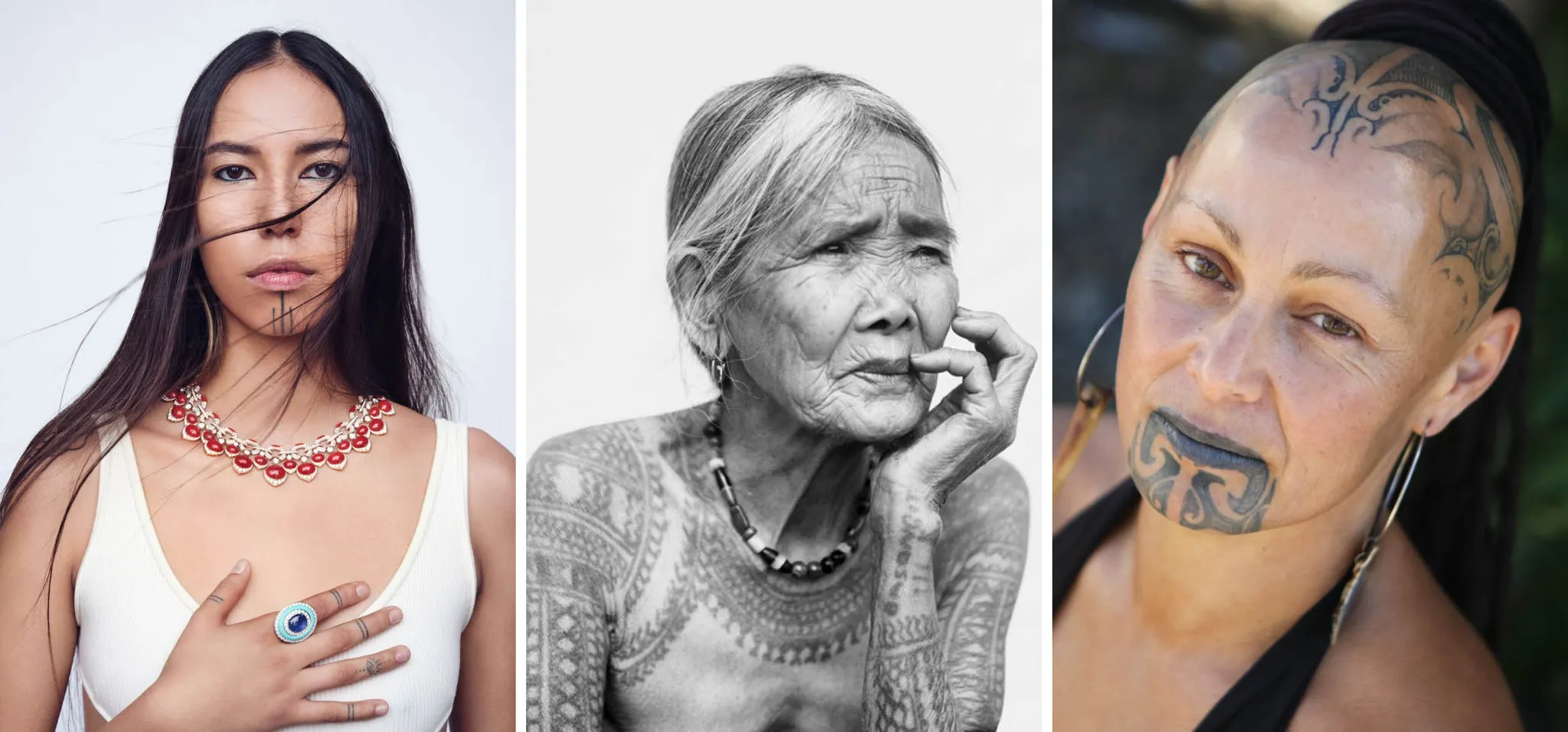
What tribes do face tattoos?
Face tattoos, or facial tattoos, hold a unique place in the realm of body art. These tattoos, prominently displayed on the bearer’s face or head, are deeply rooted in the rich traditions of various ethnic groups.
While they have historically held diverse cultural meanings, face tattoos have recently experienced a resurgence in popularity, albeit amid mixed societal perceptions. This article delves into the intriguing history, cultural significance, and modern-day revival of face tattoos.
The Heritage of Face Tattoos: A Tradition Across Cultures
Throughout history, face tattoos have been an integral part of the tattooing traditions of numerous ethnic groups worldwide. These intricate designs served as powerful markers of identity, spirituality, and life events.
In many indigenous cultures, face tattoos were symbolic of one’s connection to their heritage, often representing family lineage, social status, and personal achievements. For women, these tattoos held particular significance, marking essential milestones such as their transition to womanhood.
The Modern Taboo: Shifting Societal Perceptions
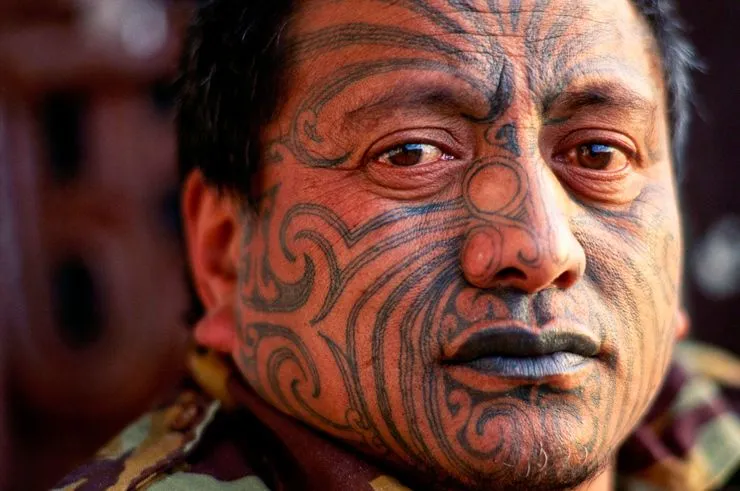
In contemporary times, face tattoos have encountered significant stigma and social disapproval in many cultures. Viewed as unconventional and, at times, extreme forms of body art, they have often been associated with rebellion and non-conformity.
This perception stems from the traditional belief that tattoos in such conspicuous locations should be approached with caution, as they can impact an individual’s employability and social interactions.
A Resurgence Amid Subcultures: Contemporary Face Tattoos
Despite the prevailing societal norms, face tattoos have witnessed a resurgence within certain subcultures. This revival can be attributed to several factors, including the growing acceptance of tattoos as a form of self-expression, the influence of hip-hop culture, and the rise of styles like the teardrop tattoo.
While face tattoos remain unconventional by mainstream standards, they have found a place within subcultural movements that celebrate individuality and challenge societal conventions.
The Teardrop Tattoo: Symbolism and Controversy
The teardrop tattoo, in particular, has garnered attention for its symbolism and controversial associations. Traditionally, it was often inked to signify the wearer’s involvement in criminal activities or to commemorate the loss of a loved one.
However, in contemporary contexts, it has taken on a range of meanings, from personal tributes to expressions of resilience and redemption. The teardrop tattoo’s evolving significance exemplifies the fluid nature of tattoo culture.
Navigating the Complex Landscape of Face Tattoos
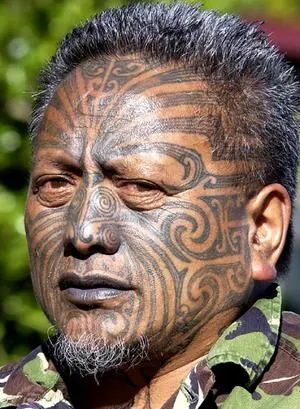
Face tattoos are a captivating fusion of tradition and modern expression. Rooted in the cultural heritage of indigenous communities, they have experienced a resurgence in recent years, challenging societal norms and perceptions.
While their acceptance remains a subject of debate, face tattoos continue to be a symbol of individuality, personal narrative, and cultural diversity. As the world of body art evolves, so too will the meanings and interpretations of these captivating tattoos, illustrating the enduring power of self-expression through ink on skin.
Which tribe has tribal face tattoo?
Tattoos, a form of body art and self-expression, have a rich history deeply intertwined with various cultures around the world. While tattoos have gained global popularity in recent times, it’s essential to recognize that for many indigenous communities, tattoos are far more than a fashion statement – they are cultural treasures, each design bearing a unique story.
Embera Girl’s Jagua Tattoo, Panama
Skin Decoration with Natural Extract
The Embera people, indigenous to Panama and Colombia, have a unique tradition of Jagua tattooing. Unlike permanent tattoos, Jagua tattoos are a form of skin decoration. They employ an extract from the Genipa Americana fruit to create intricate designs. These tattoos, donned by Embera individuals, hold both cultural and sometimes medical importance.
Chin State Village, China: Face Tattoos as a Symbol of Identity
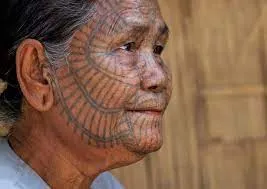
Protecting Young Women from Abduction
In the remote Chin State Village of China, a centuries-old tradition of face tattoos unfolds. This practice originated from a practical concern – to safeguard young women from abduction and enslavement by neighboring tribes. The Chin community adopted face tattoos as a powerful symbol of identity, deterring potential kidnappers and preserving their cultural heritage.
Nuer Woman’s Facial Markings, South Sudan
Adolescent Transition and Painful Rites
The Nuer people, residing in South Sudan’s Nile valley, undergo a unique rite of passage into adulthood. While not traditional tattoos, the facial markings they receive are equally permanent and often more painful. These intricate markings signify the transition from youth to adulthood, a significant milestone in Nuer culture.
Apatani Woman’s Facial Tattoo, India
Divine Beliefs and Mysterious Origins
In the Ziro valley of India, the Apatani tribe practices facial tattooing and nose plugging, believing that every object in the world possesses divine powers. The original purpose of these tattoos remains shrouded in mystery. Apatani men sport “T” tattoos on their chins, while women adorn their foreheads with a line extending to the tips of their noses.
Maori Dancer, New Zealand: Preserving Cultural Heritage
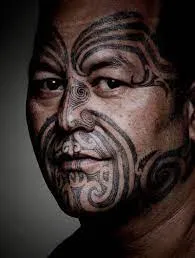
Facial Tattoos as Expressions of Heritage
The Maori people of New Zealand have a rich tradition of facial tattoos known as “ta moko.” While fewer Maori men opt for these tattoos today, they remain integral to preserving cultural heritage. Maori facial tattoos are intricate and hold deep spiritual significance, expressing an individual’s connection to their ancestral roots.
Datoga Woman’s Facial Tattoos, Tanzania
Distinctive Tattoo Patterns
The Datoga tribe, located near Lake Eyasi in Tanzania, is renowned for its unique facial tattoos. These tattoos often extend to form circles around the eyes, creating distinctive and striking patterns. The Datoga people wear these tattoos as a mark of identity and cultural pride.
Chin Hills Girl, Burma: Early Initiation into Tattoo Culture
Children Embrace Tradition from a Young Age
In the Chinbok tribe of Chin Hills, Burma, facial tattoos are an integral part of their cultural heritage. Children in this tribe receive facial tattoos from a very early age, and each tattoo design carries specific meanings. Tigers, like the tattoo on the young girl mentioned, are a common motif among the Chinbok.
The Global Tapestry of Tattoo Traditions
These diverse indigenous tattoo traditions, spanning from Panama to Burma, offer a glimpse into the rich cultural tapestry of our world. Each tattoo carries a unique narrative, serving as a cultural marker, a rite of passage, or a symbol of identity. As celebrate the beauty and significance of these traditions, gain a deeper appreciation for the cultural diversity that enriches our planet.
